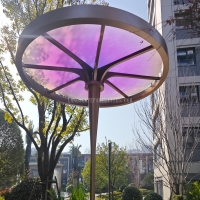Welcome to the website for landscape facilities products and knowledge.
How does the design prevent the accumulation of ant colonies?
Ant colonies can become a persistent nuisance in both residential and commercial spaces, but modern design strategies offer effective solutions to deter their accumulation. By integrating physical barriers, such as smooth surfaces and elevated foundations, designers minimize entry points for ants. Materials like stainless steel, polished concrete, or copper mesh are naturally resistant to ant infiltration due to their texture and chemical properties.
Additionally, landscaping plays a crucial role—maintaining a clear perimeter with gravel or sand creates an inhospitable zone for ants. Proper drainage systems prevent moisture buildup, eliminating attractive nesting conditions. Some designs incorporate natural repellents like peppermint oil-infused sealants or cinnamon-based coatings, which disrupt ant pheromone trails.
Smart architecture also leverages passive deterrents, such as angled surfaces that prevent climbing, or UV-reflective paints that confuse ant navigation. When combined with routine maintenance, these design elements form a robust defense against ant colonies without relying on harmful pesticides. The result is a sustainable, long-term solution that keeps spaces ant-free while promoting environmental responsibility.
Related search:

Recommendation
Metal frame with gradient color acrylic combined with high-end shading landscape facilities